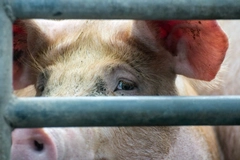
- Industry news
Industry news
- Category news
Category news
- Reports
- Key trends
- Multimedia
- Journal
- Events
- Suppliers
- Home
- Industry news
Industry news
- Category news
Category news
- Reports
- Key trends
- Multimedia
- Events
- Suppliers
Heightened risk of avian flu human transmission necessitates greater biosecurity on farms

14 Jul 2023 --- Experts warn that the avian influenza could adapt to become more transmissible among humans, posing a severe threat to public health. Given the “unprecedented spread” of the disease since December 2021, world health authorities are aligning to tackle the issue head on.
The World Health Organization (WHO), the World Organization for Animal Health (WOAH) and the Food and Agriculture Organization of the UN (FAO) are urging countries to take severe actions to curb the spread.
In 2022, 131 million poultry were lost. Thus far, in the US, 58.79 million birds have been culled, according to the US Center for Disease Control and Prevention (CDC).

In Europe, over 2,467 outbreaks led to the culling of 48 million domestic birds between 2021 and 2022, the largest observed in terms of poultry outbreaks and also leading to a record number of dead wild birds, according to the European Commission.
In May, the European Food Safety Authority (EFSA) said the outbreaks have decreased. However, the new risk in humans warrants more actions, according to the WHO, WOAH and FAO.
So far, eight cases of the virus have been reported in humans.
 The EFSA is reporting continued outbreaks of avian flu, especially among gulls.“There is a recent paradigm change in the ecology and epidemiology of avian influenza which has heightened global concern as the disease spread to new geographical regions and caused unusual wild bird die-offs and alarming rise in mammalian cases,” says Dr. Gregorio Torres, head of the science department at WOAH.
The EFSA is reporting continued outbreaks of avian flu, especially among gulls.“There is a recent paradigm change in the ecology and epidemiology of avian influenza which has heightened global concern as the disease spread to new geographical regions and caused unusual wild bird die-offs and alarming rise in mammalian cases,” says Dr. Gregorio Torres, head of the science department at WOAH.
Calls for increased surveillance
The main way to prevent avian flu is to improve biosecurity measures in farms and poultry value chains and apply good hygiene practices. WOAH also suggests that poultry vaccination may be considered an additional tool based on the local situation and the type of virus circulating.
Countries are also encouraged to implement rapid detection and response protocols based on WOAH standards.
The health authorities also call on increased surveillance of animals and humans.
When an animal outbreak or a human infection occurs, surveillance should be intensified to find and investigate more cases. Animal and human health sectors should collaborate on information sharing, risk assessment and response.
“The epidemiology of H5N1 continues to evolve rapidly,” says Keith Sumption, chief veterinary officer at FAO. “FAO brings attention to the need for vigilance and timely sharing of genetic sequences to monitor the molecular epidemiology for risk assessment and better disease control.”
The risk of avian flu should be communicated to the public and the health workers. People who work with animals should avoid contact with sick or dead birds and report them to the authorities.
“They should also be advised to seek medical care if unwell and to report any exposure to animals to their healthcare provider,” the WHO advises.
Human transmission
Scientists are investigating how the virus might evolve to infect mammals, including humans, more easily. Most people who got sick so far were exposed to infected birds and contaminated environments.
Infections in humans can cause severe diseases with a high mortality rate.
“With the information available so far, the virus does not appear to be able to transmit from one person to another easily, but vigilance is needed to identify any evolution in the virus that can change that,” says Dr. Sylvie Briand, director of epidemic and pandemic preparedness and prevention at the WHO.”  Eggflation is still painful for some EU countries’ consumers, such as in Spain (59% year-on-year inflation).
Eggflation is still painful for some EU countries’ consumers, such as in Spain (59% year-on-year inflation).
“WHO is working closely with FAO and WOAH, and laboratory networks to monitor the evolution of these viruses, looking for signals of any change that could be more dangerous to humans,” she continues.
“We encourage all countries to increase their ability to monitor these viruses and to detect any human cases. This is especially important as the virus is now affecting countries with limited prior experience in avian flu surveillance.”
Causing “eggflation”
While egg prices peaked earlier this year, consumers continue to face historically high prices to purchase the food staple.
Egg prices have gone up 18.5% on average in the EU from last year, as high energy and feed prices and the avian flu have battered the sector. At its peak, prices for large and medium eggs were up 69.3% across the bloc from November 2021 to November 2022.
Eggflation is still painful for some EU countries’ consumers, such as in Spain (59% year-on-year inflation), Romania (50.8% inflation) and Slovakia (50.7%), for prices of large and medium eggs.
In the US, the average price for a dozen large eggs has fallen from US$4.82 per dozen in January to US$2.22 in June – much higher than the June 2019 lows of US$1.2 per dozen, according to the US Bureau of Labor Statistics.
By Marc Cervera










